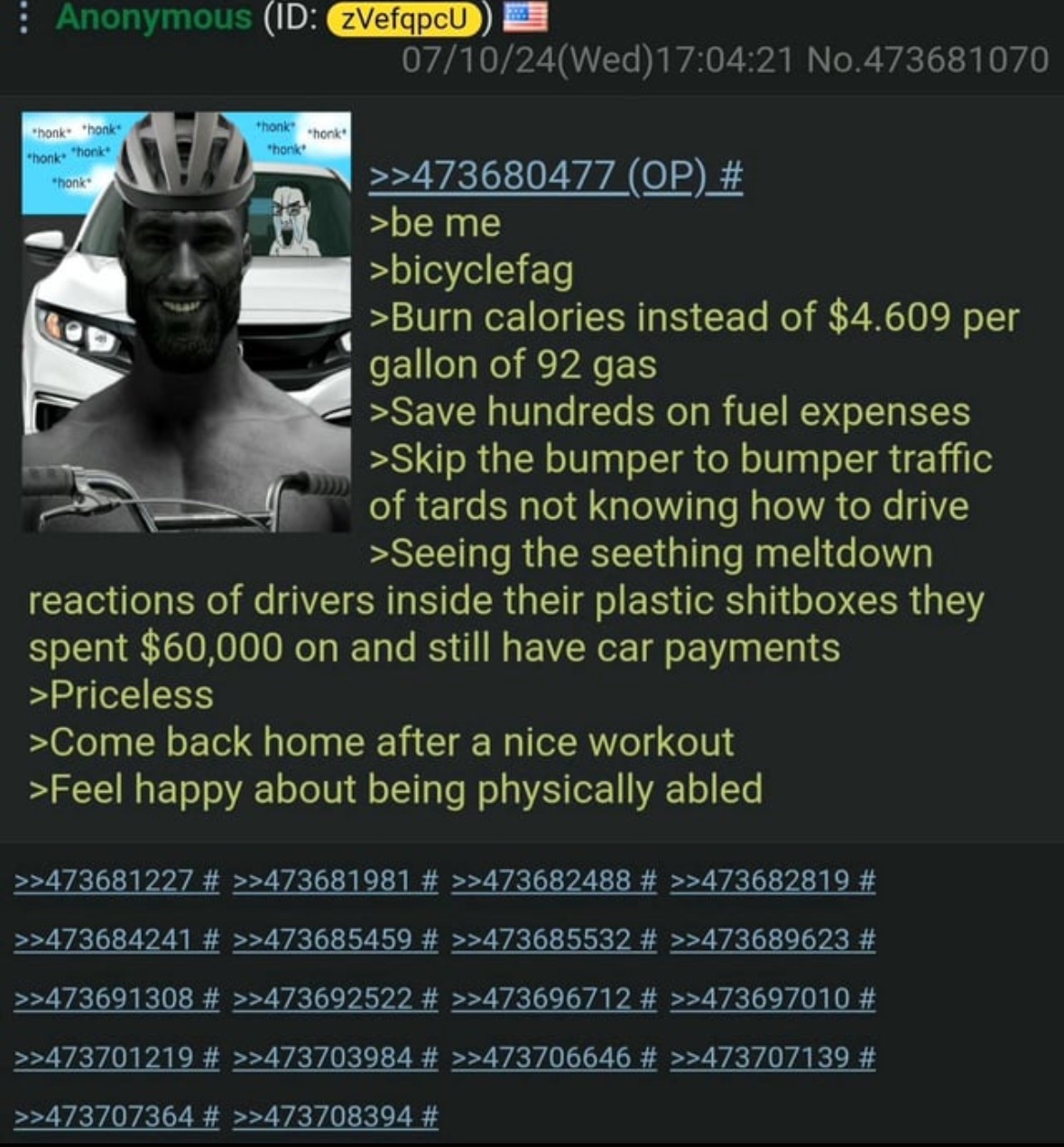this post was submitted on 09 Aug 2024
760 points (94.4% liked)
Greentext
6144 readers
908 users here now
This is a place to share greentexts and witness the confounding life of Anon. If you're new to the Greentext community, think of it as a sort of zoo with Anon as the main attraction.
Be warned:
- Anon is often crazy.
- Anon is often depressed.
- Anon frequently shares thoughts that are immature, offensive, or incomprehensible.
If you find yourself getting angry (or god forbid, agreeing) with something Anon has said, you might be doing it wrong.
founded 2 years ago
MODERATORS
you are viewing a single comment's thread
view the rest of the comments
view the rest of the comments

You're not wrong, but that's not going to work over the entire country. There's just too much space to cover; the country would go bankrupt trying to provide mass transit everywhere that it's needed. So while this could be, if you could convince people to actually do it, a solution in urban areas, it's never going to work out in the thousands of miles of country and they have the exact same problems. They just have less traffic and more empty space to cross.
We didn't go bankrupt making a car-centric infrastructure, we won't go bankrupt building adequate mass transit and micromobility infrastructure. In fact, we will probably profit greatly in myriad ways.
Acktually a fair few counties in the US have gone bankrupt building car-centric infrastructure, because it's ruinously expensive and doesn't even come close to being covered by the taxation they put on cars. Mass transit and bike infrastructure costs are miniscule in comparison and sometimes even actively gain money.
Micromobility infrastructure lets gooooo!
I just spent a week in Texas in places that had plenty of people living and presumably working close together. The infrastructure is a hellscape of concrete and asphalt and monstrous pickup trucks. It has nothing to do with being a big country and everything to do with culture and policies.
You realize the US used to have a comprehensive rail network, right?
I was specifically addressing people commuting to their job and traveling within their immediate area. That kind of stuff could definitely be covered by biking and better bus/light rail investment without having to go everywhere. The only people who wouldn't be covered by that are people living in the country and they are a minority compared to those living in suburbs or near big cities and could still be served by public transit using park and ride stations if they have to travel to a bigger city. They would just drive to the closest park and ride station and then use the public transit to travel within the metro area. Of course if they're traveling entirely within less populated country areas then public transit won't serve them that well but at that point you can just use cars as a backup. But public transit investments could easily serve the majority of people for their daily travel needs and even if they do have a high cost the economic benefit of making it easier for people to commute to work and to cities for fun day trips will create more economic value over time being a net benefit in the long run.